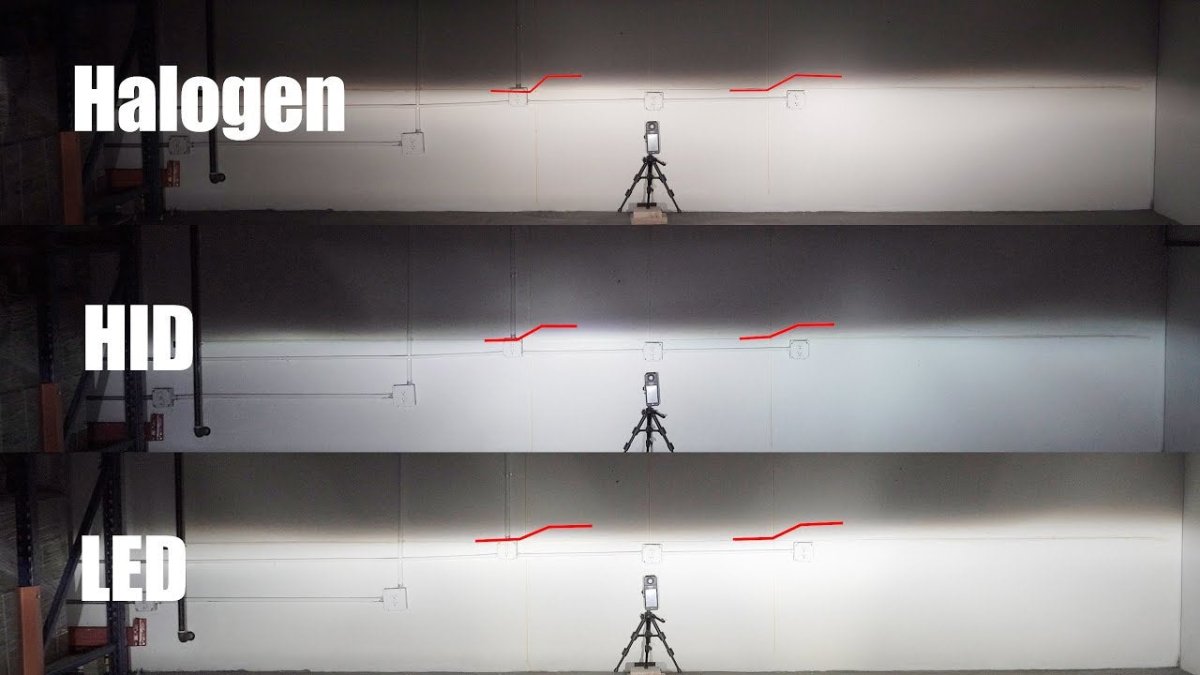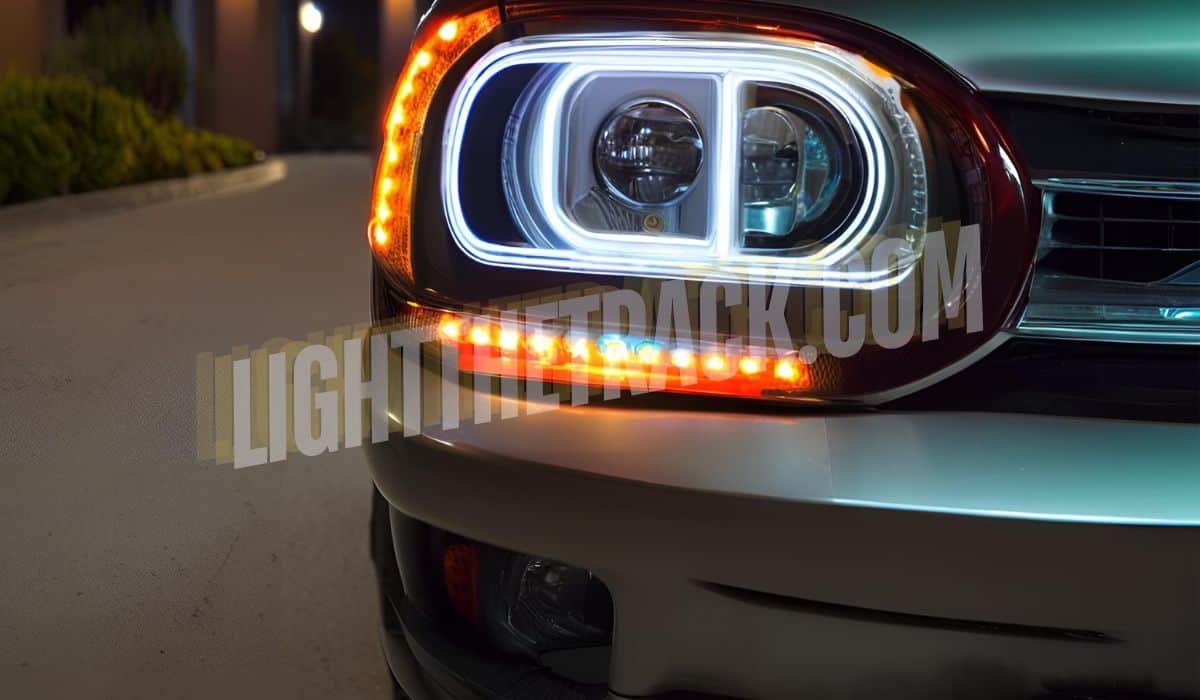LED headlights are generally brighter than halogen bulbs. LED lights produce a brighter and whiter light, which helps improve visibility on the road. While halogen bulbs are less expensive than LED lights, they do not provide the same level of brightness and visibility. In addition, LED lights have a longer lifespan and are more energy-efficient, making them a more cost-effective option in the long run.
LED headlights have become increasingly popular in recent years due to their superior performance and efficiency. They provide brighter and whiter light, which helps improve visibility on the road. This is especially important during nighttime driving or in adverse weather conditions. LED lights also have a longer lifespan and are more energy-efficient than halogen bulbs, which makes them a more cost-effective option in the long run. However, LED lights can be more expensive to purchase initially. We will explore the differences between LED and halogen headlights and help you decide which one is the best option for your vehicle.
Brightness Comparison
LED headlights are known to be brighter than halogen bulbs, providing improved visibility and safety during nighttime driving. The crisp, white light emitted by LEDs allows for better color rendering and the ability to discern objects and road hazards more accurately. While LED headlights may be more expensive, their superior performance makes them a worthwhile upgrade.
- LED Headlights:
- Use less energy
- Produce brighter light
- Have a longer lifespan
- Halogen Headlights:
- Consume more power
- Generate dimmer light
- Shorter lifespan
When measuring light output, LED headlights generally outshine halogen bulbs. The real-world performance of LED headlights is significantly better, offering improved visibility and enhanced safety during nighttime driving. The brightness and color rendering of LED headlights provide better illumination of objects and road hazards. Additionally, LED headlights have a longer lifespan and consume less power compared to halogen bulbs. This makes them a more efficient and cost-effective choice for vehicle owners.
Color Temperature and Visibility
LED headlights are known for their superior brightness compared to halogen bulbs. This is mainly due to the color temperature and the understanding of the color spectrum. LED headlights emit a whiter, brighter light that closely resembles daylight. The higher color temperature of LED lights, typically around 6000K, enhances visibility on the road, especially in low-light conditions. The whiter light produced by LEDs helps to illuminate the road more effectively, allowing drivers to see further ahead and spot potential hazards earlier.
On the other hand, halogen bulbs have a lower color temperature, usually around 3200K. This warmer, yellowish light can limit visibility, especially in dark or foggy conditions. By understanding the color spectrum and its impact on driver visibility, it becomes clear that LED headlights are indeed brighter than halogen bulbs. Their higher color temperature and whiter light provide enhanced visibility, making them a popular choice for many drivers.
Response Time and Safety
LED headlights have a significant advantage over halogen headlights when it comes to response time and safety. The quickness of illumination provided by LED headlights ensures a faster reaction time for drivers, allowing them to see obstacles on the road more promptly. This enhanced visibility leads to improved safety on the highways.
In addition to their quick response time, LED headlights also offer other safety advantages. Their brighter and whiter light output enhances visibility during nighttime driving, allowing drivers to see objects and road hazards more accurately. LED headlights also have a longer lifespan compared to halogen headlights, reducing the need for frequent bulb replacements and ensuring consistent illumination on the road. In conclusion, LED headlights provide better response time and safety benefits compared to halogen headlights. Their quickness of illumination and improved visibility make them a superior choice for drivers looking to enhance their driving experience and stay safe on the road.

Credit: www.youtube.com
Heat Emission and Efficiency
LED headlights are brighter than halogen and also emit less heat, making them more efficient. The improved brightness and lower heat emission of LED headlights provide better visibility and safety for drivers, making them a popular choice for vehicle lighting upgrades.
LED headlights are becoming more and more popular due to their brightness and efficiency. One major advantage of LED lights is their thermal management system, which helps to prevent heat from building up and damaging the headlights. This system allows LED lights to be more efficient over time, as they maintain their brightness and do not deteriorate as quickly as halogen bulbs. In contrast, halogen bulbs emit a lot of heat and can be less efficient over time as they wear out. When it comes to choosing between LED and halogen headlights, it is important to consider the thermal management system in the headlights and the long-term efficiency of the bulbs.
Longevity and Durability
LED headlights are generally brighter than halogen bulbs and offer better longevity and durability. However, some drivers may find LED headlights too bright and blinding over long distances, particularly for older drivers with dark-adapted eyesight.
Lifespan Comparison
- LED headlights have a lifespan of up to 25,000 hours, which is significantly longer than halogen bulbs that last up to 1,200 hours. This means that LED headlights are a more cost-effective option in the long run as they require less frequent replacements.
Resistance to Wear
- Furthermore, LED headlights are highly resistant to wear and tear. They are designed to withstand harsh weather conditions and are not affected by vibrations, making them a reliable choice for drivers.

Credit: m.youtube.com
Cost Implications
LED headlights are known to be brighter than halogen headlights, but it’s important to consider the cost implications before making a decision. While LED headlights may have a higher initial investment compared to halogen headlights, they offer long-term savings. LED headlights have a longer lifespan, which means they need to be replaced less frequently. This can result in cost savings over time as you won’t need to spend as much money on replacements. Additionally, LED headlights are more energy-efficient, consuming less power and saving on fuel costs. Although LED headlights may be initially expensive, the long-term savings in terms of replacement costs and energy efficiency make them a worthwhile investment for many drivers.
Pros and Cons
LED headlights have gained popularity due to their numerous advantages over halogen bulbs. Here are some of the benefits of LED headlights:
- Brightness: LED headlights emit a whiter and brighter light compared to halogen bulbs, providing improved visibility and a broader field of vision during nighttime driving.
- Energy Efficiency: LED headlights consume less power and are more energy-efficient than halogen bulbs, resulting in lower fuel consumption and reduced carbon emissions.
- Durability: LED headlights have a longer lifespan compared to halogen bulbs, reducing the need for frequent replacements and saving money in the long run.
- Instant On/Off: LED headlights have a faster response time, instantly turning on and off without any warm-up period, providing immediate illumination when needed.
- Customization: LED headlights offer the flexibility of customization, allowing drivers to choose different colors and styles to enhance the appearance of their vehicles.
On the other hand, some people still prefer halogen headlights due to their lower cost and compatibility with older vehicles. Halogen bulbs may not be as bright or energy-efficient as LEDs, but they still offer adequate illumination for many drivers.

Credit: allalighting.com
Upgrading to LED Headlights
When considering upgrading to LED headlights, it’s important to think about compatibility issues. LED headlights may not be compatible with older vehicle models, and some may require additional modifications for proper installation. It’s also essential to ensure that the LED headlights are compatible with the vehicle’s electrical system to avoid any potential issues.
Regulatory and Environmental Impact
In terms of regulatory and environmental impact, LED headlights face certain legal restrictions due to their brightness and color temperature. However, they are considered more eco-friendly compared to halogen bulbs due to their lower energy consumption and longer lifespan. LED headlights comply with the regulations related to energy efficiency and are considered a more sustainable option for vehicles. Additionally, the reduced power consumption of LED headlights has a positive impact on the environment by lowering the overall energy demand and reducing carbon emissions.
Frequently Asked Questions
What are the disadvantages of LED headlights?
The main disadvantage of LED headlights is that they can be too bright, too blue, and too concentrated, making them incompatible with dark-adapted human eyesight, especially for older drivers. This can lead to blinding over long distances. Additionally, LED headlights can be more expensive than halogen bulbs.
What type of headlights are the brightest?
LED headlights are the brightest type available, offering superior illumination for enhanced visibility during nighttime driving. LED lights emit a whiter and brighter light compared to halogen bulbs, providing better color rendering and a broader field of vision for improved safety on the road.
Is it worth upgrading to LED headlights?
Upgrading to LED headlights is worth it. LED headlights provide improved brightness and visibility, enhancing safety during nighttime driving. They emit a crisp, white light that allows for better color rendering, helping drivers discern objects and road hazards more accurately. LED headlights are superior to halogen bulbs in terms of performance.
Which headlight is good, LED or halogen?
LED headlights are superior to halogen bulbs, offering brighter and whiter light for improved visibility. However, the main downside is the higher cost of LED headlights.
Are LED headlights brighter than halogen?
LED headlights are indeed brighter than halogen headlights. They emit a whiter, brighter light, providing better visibility and enhancing safety during nighttime driving.
What are the advantages of LED headlights over halogen?
LED headlights have several advantages over halogen headlights. They offer improved brightness and visibility, a broader field of vision, better color rendering, and a longer lifespan. Additionally, LED headlights are more energy-efficient and produce less heat.
Are LED headlights worth upgrading to?
Yes, upgrading to LED headlights is worth it. The improved brightness and visibility provided by LED headlights enhance safety on the road. Moreover, the long lifespan and energy efficiency of LED headlights make them a cost-effective choice in the long run.
Conclusion
LED headlights are brighter than halogen bulbs, offering improved visibility and safety for drivers. Despite the higher cost, the crisp, white light emitted by LEDs provides better color rendering and a broader field of vision during nighttime driving. Upgrading to LED headlights is worth considering for enhanced illumination on the road.


Leave a Reply